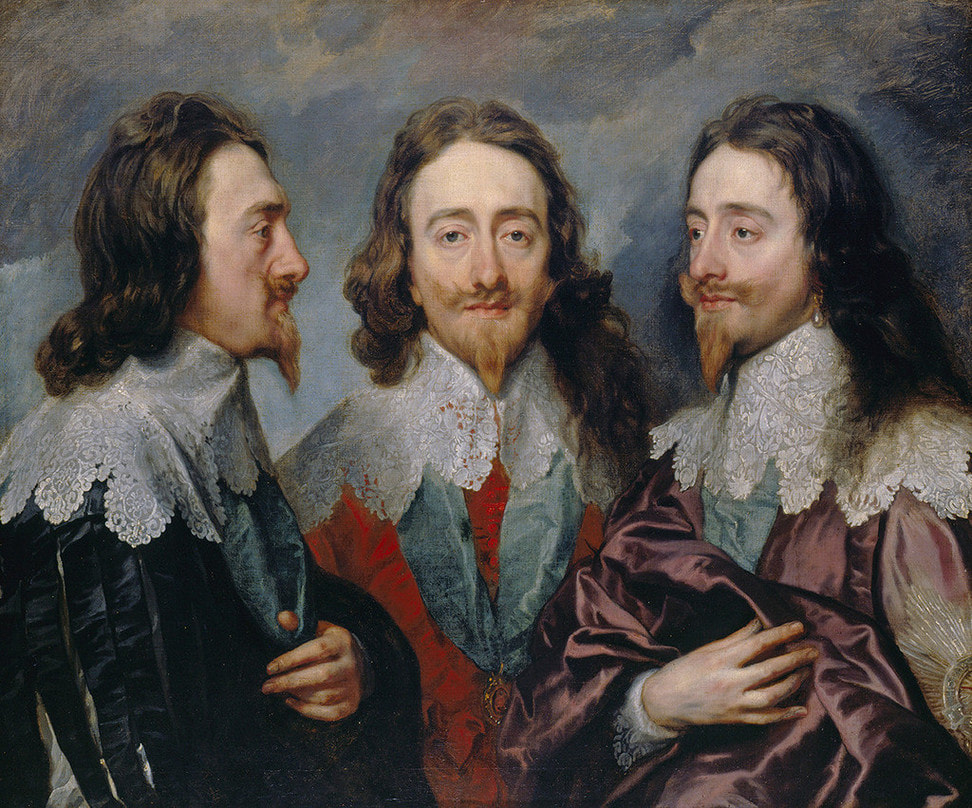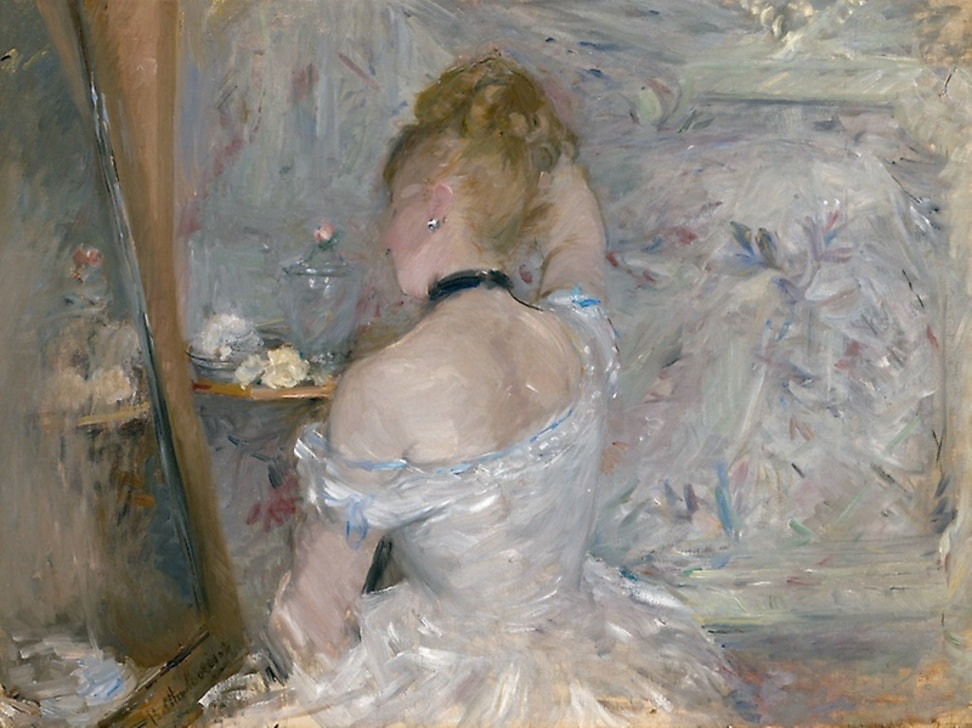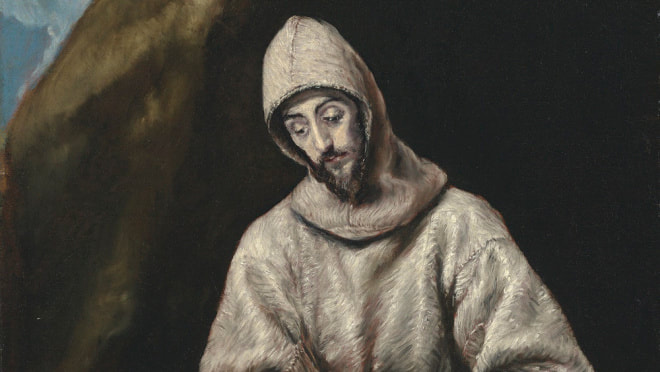|
Thomas Cole‘s ‘The Course of Empire: Destruction’ (1836) - (The New-York Historical Society) Opening January 30 at The Metropolitan Museum of Art, the exhibition Thomas Cole’s Journey: Atlantic Crossings will examine, for the first time, the artist’s transatlantic career and engagement with European art.
Click here to watch a video introduction to Thomas Cole's Journey: Atlantic Crossings, narrated by Sting. Click here to watch a video that reveals the findings of a technical examination conducted by The Met's conservation team on Thomas Cole's The Oxbow and The Course of Empire: The Consummation of Empire. Celebrated as one of America’s preeminent landscape painters, Thomas Cole (1801–1848) was born in northern England at the start of the Industrial Revolution, emigrated to the United States in his youth, and traveled extensively throughout England and Italy as a young artist. He returned to America to create some of his most ambitious works and inspire a new generation of American artists, launching a national school of landscape art. With Cole’s masterworks The Course of Empire series (1834–36) and The Oxbow(1836) as its centerpiece, the exhibition will feature more than three dozen examples of his large-scale landscape paintings, oil studies, and works on paper. Consummate paintings by Cole will be juxtaposed with works by European masters including J. M. W. Turner and John Constable, among others, highlighting the dialogue between American and European artists and establishing Cole as a major figure in 19th-century landscape art within a global context. The exhibition marks the 200th anniversary of Cole’s arrival in America. The exhibition follows the chronology of Cole’s journey, beginning with his origins in recently industrialized northern England, his arrival in the United States in 1818, and his embrace of the American wilderness as a novel subject for landscape art of the New World. Early works by Cole will reveal his prodigious talent. After establishing himself as the premier landscape painter of the young United States, he traveled back to Europe. The next section will explore in depth Cole’s return to England in 1829–31 and his travels in Italy in 1831–32, revealing the development of his artistic processes. He embraced the on-site landscape oil study and adopted elements of the European landscape tradition reaching back to Claude Lorrain. He learned from contemporary painters in England, including Turner, Constable, and John Martin, and furthered his studies in landscape and figure painting in Italy. By exploring this formative period in Cole’s life, the exhibition will offer a significant revision of existing accounts of his work, which have, until now, emphasized the American aspects of his formation and identity. The exhibition will also provide new interpretations of Cole’s work within the expanded contexts of the history of the British Empire, the rise of the United States, the Industrial Revolution and the American wilderness. Upon his return to America, Cole applied the lessons he had learned abroad to create the five-part series The Course of Empire (1834–36), warning the American public that the rise and decline of ancient civilizations could be a potential fate for the young nation. Cole also provided a definition of the new American Sublime that comes to its fullest expression in The Oxbow (1836). Finally, the exhibition concludes with an examination of Cole’s legacy in the works of the next generation of American landscape painters whom Cole personally mentored, notably Asher B. Durand and Frederic E. Church. The exhibition will be accompanied by a catalogue suitable for both scholars and the general public. With new information on Cole’s life and revisionist interpretations of his major works, the publication will also feature research by The Met’s conservation team into Cole’s methods as a painter, illuminating this previously neglected area. The catalogue will be available for purchase in The Met Store (hardcover, $65). A series of Education programs will complement the exhibition. MetLiveArts Sting: Atlantic Crossing will feature an intimate, acoustic performance by Sting in the Museum’s Grace Rainey Rogers Auditorium on April 24, 25, and 26 (7:30 p.m.). Prior to each concert, ticket holders will enjoy a special viewing of the exhibition with curators Elizabeth Kornhauser and Tim Barringer. The April 24 performance is for Members only. On April 8 (2 p.m.), as part of MetSpeaks, American artist Ed Ruscha will discuss his seminal five-part Course of Empireseries (1992 and 2003–5) with his friend, the author and artist Tom McCarthy, who resides in London. Tickets for this event will be available for purchase. Met curator Elizabeth Kornhauser and paintings conservator Dorothy Mahon will explore Cole’s work methods and techniques with artist Stephen Hannock on February 7 (6:00 p.m.), revealing the layers of meaning in Cole’s iconic painting, The Oxbow. This program is part of the Conversations With… series. Elizabeth Kornhauser will moderate a Sunday at The Met discussion on April 15 (2 p.m.) on Cole’s role as a proto-environmental artist with scholars Alan Braddock and Rebecca Bedell and artist Michel Auder. (Auder’s 2017 work The Course of Empire was shown at the Documenta exhibition in Kassel, Germany.) These programs are free with Museum admission.
0 Comments
Anthony van Dyck, Charles I, 1635-6. Oil on canvas. 84.4 x 99.4 cm. RCIN 404420. Royal Collection Trust / © Her Majesty Queen Anthony van Dyck, Charles I, 1635-6. Oil on canvas. 84.4 x 99.4 cm. In January 2018, the Royal Academy of Arts, in partnership with Royal Collection Trust, will present Charles I: King and Collector, a landmark exhibition that will reunite one of the most extraordinary and influential art collections ever assembled. During his reign, Charles I (1600-1649) acquired and commissioned exceptional masterpieces from the fifteenth to the seventeenth century, including works by Van Dyck, Rubens, Holbein, Titian and Mantegna, amongst others. Charles I was executed in 1649 and just months later the collection was offered for sale and dispersed across Europe. Although many works were retrieved by Charles II during the Restoration, others now form the core of collections such as the Musée du Louvre and the Museo Nacional del Prado. Charles I: King and Collector will reunite around 150 of the most important works for the first time since the seventeenth century, providing an unprecedented opportunity to experience the collection that changed the appreciation of art in England. In 1623, two years prior to his ascension to the throne, Prince Charles visited Madrid. The Habsburg collection made a lasting impression on the future king and he returned to England with a number of works, including paintings by Titian and Veronese. Intent on creating his own collection, he acquired the esteemed Gonzaga collection, which had been accumulated by the Dukes of Mantua. He also commissioned important artists, most notably Anthony van Dyck, who was appointed ‘principalle Paynter in Ordenarie to their Majesties’ in 1632. In collaboration and competition with other collectors close to the Stuart court, namely Thomas Howard (1586-1646), Earl of Arundel, and George Villiers (1592-1628), Duke of Buckingham, Charles I amassed a collection unrivalled in the history of English taste. By 1649, the collection of Charles I comprised around 1,500 paintings and 500 sculptures. An inventory compiled by Abraham van der Doort (c.1580-1640), first Surveyor of The King’s Pictures, recorded the contents of the collection, providing a detailed account of the artistic tastes and high level of connoisseurship within the king’s circle. Charles I: King and Collector will include over 90 works generously lent by Her Majesty The Queen from the Royal Collection. Major lenders will also include The National Gallery, London, the Musée du Louvre, Paris, the Museo Nacional del Prado, Madrid, as well as numerous other public and private collections. Anthony van Dyck’s monumental portraits of the king and his family will form the core of the exhibition: his first major commission upon his arrival in England, Charles I and Henrietta Maria with Prince Charles and Princess Mary (‘The Greate Peece’), 1632 (The Royal Collection), and his two magnificent equestrian portraits, Charles I on Horseback with M. de St. Antoine, 1633 (The Royal Collection), and Charles I on Horseback, 1637-38 (The National Gallery, London). They will be shown together with Van Dyck’s most celebrated and moving portrait of the king, Charles I (‘Le Roi à la chasse’), c.1635 (Musée du Louvre, Paris), which will return to England for the first time since the seventeenth century. Charles I commissioned some of the most important artists of his day, and the exhibition will include Peter Paul Rubens’s Minerva Protects Pax from Mars (‘Peace and War’), 1629-30 (The National Gallery, London) and his Landscape with Saint George and the Dragon, 1630-5 (The Royal Collection) as well as Van Dyck’s spectacular Cupid and Psyche, 1639-40 (The Royal Collection). Particular attention will be given to the patronage of Queen Henrietta Maria, including works by Orazio Gentileschi and Guido Reni. In addition, the exhibition will present the most important Renaissance paintings from the collection, including Andrea Mantegna’s monumental series, The Triumph of Caesar, c.1484-92 (The Royal Collection), which will command a dedicated gallery within the exhibition, as well as Titian’s Supper at Emmaus, c.1530 (Musée du Louvre, Paris), and Charles V with a Dog, 1533 (Museo Nacional del Prado, Madrid). Other Renaissance artists represented are Correggio, Agnolo Bronzino, Jacopo Bassano, Tintoretto and Paolo Veronese as well as Albrecht Dürer, Jan Gossaert, Hans Holbein the Younger and Pieter Bruegel the Elder. Further highlights will be the celebrated Mortlake tapestries of Raphael’s Acts of the Apostles, c.1631- 40 (Mobilier National, Paris), arguably the most spectacular set of tapestries ever produced in England, as well as the precious works formerly kept in the Cabinet at Whitehall Palace, including paintings, statuettes, miniatures and drawings. Christopher Le Brun, President, Royal Academy of Arts, said: ‘Charles I is one of history’s greatest collectors, the Royal Collection is one of the world’s greatest collections and the Royal Academy’s galleries are amongst the finest in the world. With such a combination this exhibition provides the perfect launch for our 250th anniversary celebrations in 2018’. Charles I: King and Collector is organised by the Royal Academy of Arts in partnership with Royal Collection Trust. The exhibition is curated by Per Rumberg, Curator, Royal Academy of Arts, and Desmond Shawe-Taylor, Surveyor of The Queen’s Pictures. Charles I: King and Collector will be accompanied by a comprehensive catalogue edited by Per Rumberg and Desmond Shawe-Taylor; further authors include David Ekserdjian, Barbara Furlotti, Erin Griffey, Gregory Martin, Guido Rebecchini, Vanessa Remington, Karen Serres, Lucy Whitaker and Jeremy Wood. The Musée national des beaux-arts du Québec (Québec City, Canada), the Barnes Foundation (Philadelphia, PA), the Dallas Museum of Art (Dallas, TX), and the Musée d’Orsay (Paris, France) have announced an internationally touring exhibition dedicated to one of the revolutionary artists of the French Impressionist movement, Berthe Morisot (1841–1895). Co-organized by the four institutions, Berthe Morisot, Woman Impressionist will focus on the artist’s figure paintings and portraits through approximately 50 to 60 paintings from both public institutions and private collections. This tour will be the first dedicated presentation of Morisot’s work to be held in the United States since 1987, the very first solo exhibition of her work to be mounted in Canada, and the first time since 1941 that a French national museum will devote a monographic show to this important painter. One of the founding members of the French Impressionists, Berthe Morisot was celebrated in her time as one of the leaders of the group, and her innovative works were coveted by dealers and collectors alike. Despite her accomplishments, today she is not as well-known as her Impressionist colleagues, such as Claude Monet, Edgar Degas, and Pierre-Auguste Renoir. Co-curated by Sylvie Patry, Chief Curator/Deputy Director for Curatorial Affairs and Collections at the Musée d’Orsay, Paris and Consulting Curator at the Barnes Foundation, and Nicole R. Myers, The Lillian and James H. Clark Curator of European Painting and Sculpture at the Dallas Museum of Art, Berthe Morisot, Woman Impressionist will both illuminate and reassert Morisot’s role as an essential figure within the Impressionist movement and the development of modern art in Paris in the second half of the 19th century. The exhibition traces the exceptional path of a female painter who, in opposition to the norms of her time and social background, became an important member of the Parisian avant-garde from the late 1860s until her untimely death in 1895. Through her portrayal of the human figure, Morisot was able to explore the themes of modern life that came to define Impressionism, such as the intimacy of contemporary bourgeois living and leisure activities, the importance of female fashion and the toilette, and women’s domestic work, all while blurring the lines between interior and exterior, public and private, finished and unfinished. Organized semi-chronologically, the exhibition will examine Morisot’s painterly innovations and fundamental position within Impressionism across the arc of her productive, yet relatively short life. The exhibition explores the following periods and themes of Morisot’s work:
Exhibition Organization: Berthe Morisot, Woman Impressionist is organized by Musée national des beaux-arts du Québec, the Barnes Foundation, the Dallas Museum of Art, and the Musées d’Orsay and de l’Orangerie. The exhibition is co-curated by Sylvie Patry, Chief Curator/Deputy Director for Curatorial Affairs and Collections at the Musée d’Orsay, Paris and Consulting Curator at the Barnes Foundation, and Nicole R. Myers, The Lillian and James H. Clark Curator of European Painting and Sculpture at the Dallas Museum of Art. Exhibition Tour:
The exhibition is accompanied by a fully illustrated catalogue that emphasizes the importance of understanding Morisot’s work in light of her dialogue with contemporary artistic movements—Impressionism, but also Post-Impressionism and Symbolism. Berthe Morisot, Woman Impressionist makes an important contribution to the field, with interdisciplinary scholarship and a specific focus on Morisot’s pioneering developments as a painter first, woman second. Edited by Sylvie Patry, an English- and French-language catalogue will be co-published by Rizzoli International Publications, Inc. and the Barnes Foundation, Philadelphia, in association with the Dallas Museum of Art and the Musée national des beaux-arts du Québec, Québec. A separate French-language catalogue will be published by the Musée d’Orsay, Paris. The book contains essays by Morisot scholars including the exhibition co-curators Sylvie Patry and Nicole R. Myers; Cindy Kang, Barnes Foundation; Marianne Mathieu, Musée Marmottan; and Bill Scott, Pennsylvania Academy of the Fine Arts, as well as a chronology by Amy Wojciechowski with additional research by Monique Nonne (hardcover, $55). December’s London sales are up 75.6% over last year. |
AuthorsWriters, Journalists and Publishers from around the World. Archives
March 2019
Categories
All
|







 RSS Feed
RSS Feed